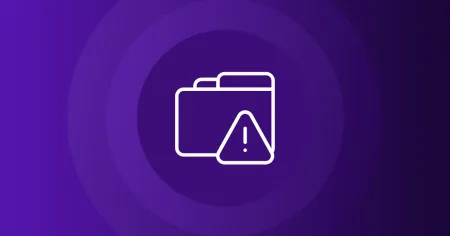Blog
Feb 6, 2024
The Essential Guide to Incident Response and Cyber Resilience
Guide on cyber incident response: skills, frameworks, real-world examples, and the OffSec advantage for building cyber resilience.
4 min read

The proliferation of new cyber threats has made incident response harder and more important. What’s clear is that incident response isn’t something that can be 100% automated. Today’s incident responders need to be equipped with a diverse set of skills including rapid detection, containment, eradication and recovery when faced with a security breach, as well as two real-world examples of incident response.
The Proactive Path to Cyber Resilience
Effective incident response requires a proactive mindset focused on readiness. The key is having defined plans, skilled personnel, and tested processes in place before an event occurs. This enables organizations to swiftly detect incidents, understand the impact, contain threats, eliminate footholds, and restore operations. Below, we’ll be briefly going over core incident response frameworks, incident response team roles, the incident response lifecycle, and how having the OffSec advantage helps organizations stay safe.
Core Incident Response Frameworks
Most organizations utilize established frameworks to structure their incident response capabilities. Below are a few examples of frameworks used in enterprise organizations today to maximize incident response capabilities:
NIST 800-61: Provides guidelines for building IR teams, communication plans, monitoring, analysis, mitigation, reporting, and improvements.
SANS IRP: Outlines a six-step process including preparation, identification, containment, eradication, recovery, and lessons learned.
MITRE ATT&CK: Maps out known adversary techniques to inform detection strategy and response capabilities.
Critical Incident Response Team Roles
Cross-functional collaboration is crucial for security incident response. The effectiveness of incident response hinges on a well-coordinated team, each member playing a pivotal role:
- CISO: Sets overall security strategy and priorities for the IR team.
- Incident Manager: Leads response by activating plans, assigning tasks, documenting events, and managing communications.
- Security Analysts: Monitor systems, detect incidents, perform triage, and analyze impact.
- Forensics Experts: Conduct deep technical investigations to determine root causes and uncover evidence.
This collective expertise is the driving force behind an organization’s incident response lifecycle, which, when implemented correctly, ensures a strategic and comprehensive approach to every phase of incident management.
The Incident Response Lifecycle
In the realm of cybersecurity, the Incident Response Lifecycle is a critical narrative of defense, unfolding in phases, each crucial to thwarting cyber threats effectively.
Before: Preparation
- Develop IR policies, playbooks, communications templates, stakeholder contacts, etc.
- Implement controls to prevent, detect, and slow adversary activities.
- Conduct exercises to validate capabilities.
During: Detection & Analysis
- Gather intelligence from tools like IDS, SIEM, EDR to detect potential incidents.
- Perform triage and determine scope, impact, and priority for response.
- Engage in specialized skills like forensics for in-depth investigations.
During: Containment, Eradication & Recovery
- Contain attacks and prevent lateral movement across the environment.
- Eliminate adversary access points, disable accounts, remove malware etc.
- Restore business functions and remediate vulnerabilities.
After: Lessons Learned
- Document incident details including chronology, adversary TTPs, findings etc.
- Identify gaps in preparation, detection, and response to strengthen capabilities.
- Update response plans with new learnings to enhance readiness.
This lifecycle not only prepares organizations to face current threats but also to learn from past incidents like the two outlined below, turning each challenge into a stepping stone towards greater cyber resilience.
Lessons in the Past: SolarWinds and Colonial Pipeline
In the theater of cyber conflict, certain narratives stand out, serving not just as lessons but as catalysts for evolving our defense strategies. The SolarWinds and Colonial Pipeline incidents are such stories, each offering unique insights into the fabric of robust incident response.
SolarWinds: A Lesson in Stealth and Response
A covert operation turned the trusted SolarWinds Orion platform into a conduit for a massive breach, affecting top-tier organizations. The incident underscored the essentiality of robust monitoring and quick, decisive action in incident response. It taught us that vigilance and a proactive stance in detecting and isolating threats are fundamental in mitigating the impact of a breach.
Colonial Pipeline: A Narrative of Recovery
The Colonial Pipeline incident, a dramatic ransomware attack, disrupted critical infrastructure and market dynamics. However, the swift containment, collaboration with law enforcement, and strategic recovery efforts highlighted the power of a resilient incident response. This story reinforces the importance of preparation, rapid action, and clear communication in turning the tide against cyber threats.
The above narratives are not just cautionary tales but blueprints for building a resilient future. They emphasize that a robust incident response is our most reliable shield against the evolving threats in the cyber realm. As we forge ahead, let’s carry forward these lessons, integrating them into our strategies for a more secure digital world, and consider how OffSec’s continuous workforce development platform can help.
The OffSec Advantage
OffSec provides unparalleled real-world incident response training through their Incident Responder Essentials Learning Path.
OffSec leverages insights gained from teaching offensive security to inform robust incident response capabilities. By exposing learners to the latest hacker tools and techniques, OffSec arms defenders with insider knowledge of adversary behaviors and vulnerabilities.
Taught by veteran incident responders, the curriculum instills a proactive mindset and provides indispensable skills in threat hunting, digital forensics, communications planning, containment strategies, and reporting.
Start Building Your Cyber Resilience
Effective incident response is essential for surviving today’s threat landscape. We now have a new Learning Path available to all OffSec Learn Unlimited and Learn Enterprise subscribers – Incident Responder Essentials. By taking a proactive approach, investing in key skills, and continuously improving, organizations can achieve robust cyber resilience. Contact OffSec today to assess your incident response readiness.
Stay in the know: Become an OffSec Insider
Get the latest updates about resources, events & promotions from OffSec!
Latest from OffSec

Research & Tutorials
CVE-2025-32433: Vulnerability in Erlang/OTP SSH Implementation
Read about a critical vulnerability found in the SSH implementation of Erlang/OTP arising from improper handling of SSH protocol messages.
Apr 23, 2025
3 min read

Research & Tutorials
CVE-2024-13059: Exploiting Path Traversal in AnythingLLM for Remote Code Execution
Discover CVE-2024-13059, a critical vulnerability flat that affects AnythingLLM’s handling of ASCII filenames in the multer library.
Apr 17, 2025
2 min read

Enterprise Security
How OSCP Holders Can Lead Their Teams to Greater Cybersecurity Resilience
Champion OSCP training in your organization to build a unified, resilient security team.
Apr 11, 2025
6 min read